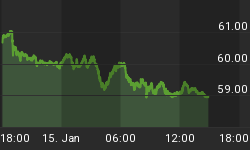The Association of American Railroads reports the number of rail tankers carrying crude oil and petroleum products in the United States increased more than 35 percent during the first six months of the year when compared with 2011. After the U.S. Energy Department, in its report, noted the lack of pipeline infrastructure in North Dakota, British supermajor BP announced it was considering rail to bring oil from the Bakken formation there to its refinery in Washington state. In terms of the environmental footprint, meanwhile, rail deliveries account for less than 1 percent of the total emissions from the transportation sector. These findings come even though rail shipments are three times more expensive than pipeline deliveries.
The AAR finds that 241,000 rail tanker cars hauled oil during the six-month period ending in June, a 38 percent increase over the same period in 2011. For June, rail deliveries increased 51 percent over their 2011 levels for the month. Each rail tanker carries around 700 barrels of oil, meaning June deliveries translated to nearly 1 million barrels per day. The U.S. Energy Department's Energy Information Administration attributes much of the increase in rail deliveries to the oil boom under way in North Dakota, which in March became the second-largest oil producing U.S. state. Oil producers in the region, however, rely on rail to get oil out of the region and BP this week said it was considering a rail project to bring Bakken crude to its 225,000-bpd refinery in Washington. The permitting process could begin as early as next month.
Rail deliveries, however, cost, on average, $15 per barrel compared with the $5 per barrel for deliveries through pipeline systems. On the other hand, the rail system is getting less energy intensive. While the transportation sector accounts for about 25 percent of the global energy-related carbon dioxide emissions, rail represents a minor fraction of that total. Across the board, emissions for transportation are increasing in every sector except rail, which accounts for less than 1 percent of total CO2 emissions for the sector.
When completed, the entire Keystone oil pipeline network could carry about 1.1 million bpd compared with the same approximate total for the entire United States for rail. The 3,100-mile Enbridge Pipeline System, which stretches from the Athabasca oil sands facilities in Alberta to oil refineries in the Midwest, can carry, on average, 1.4 million bpd. The week before last, however, more than 1,000 barrels oil spilledfrom a section of that pipeline in Wisconsin. While Enbridge said much of the release was contained, the incident occurred one day after the two-year anniversary of the costliest onshore crude oil spill in U.S. history from a section of the same pipeline network. Though in terms of volume, pipeline transportation has proved its merit, the move by BP in the Bakken formation suggests rail transit remains a viable option for the industry.
Source: http://oilprice.com/Energy/Energy-General/Rail-May-Hold-its-Own-Against-Pipelines.html
By Daniel Graeber of Oilprice.com
















